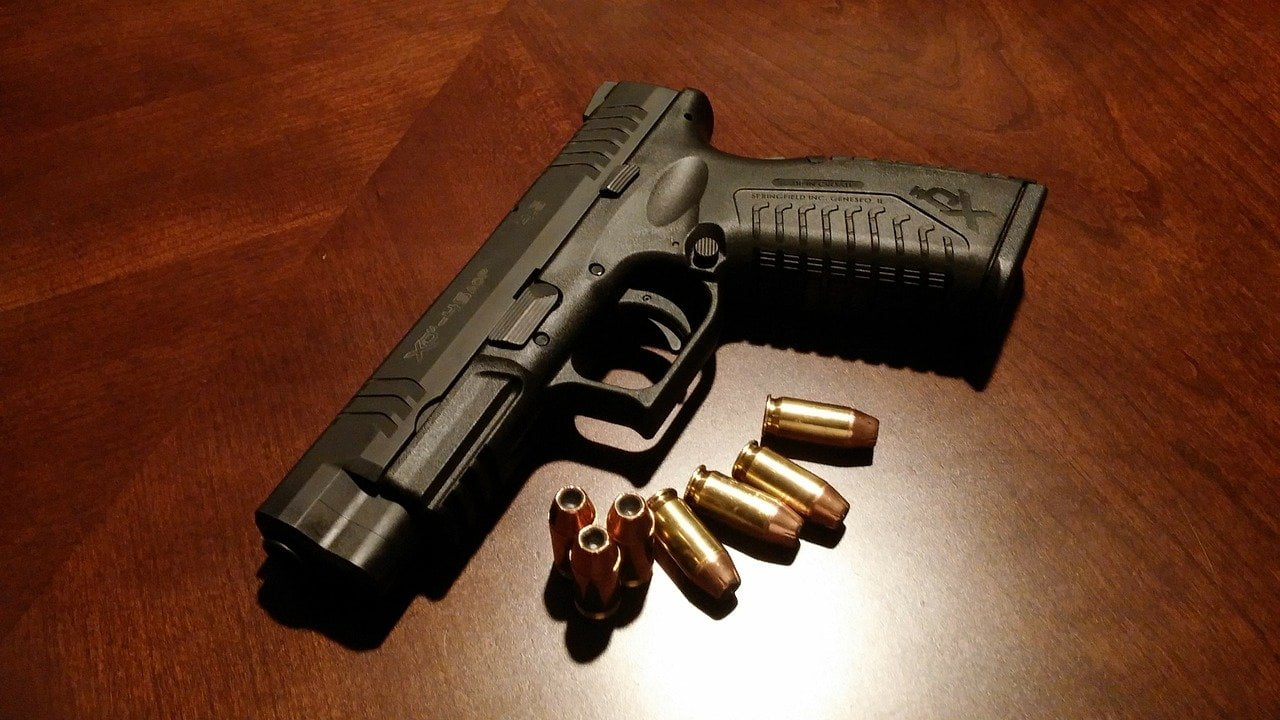New Deadly School Shooting in VA; Should Teachers Be Armed?; 29 States Have Armed Teachers – What’s Next, Including Non-Lethal Weapons
UVA Deadly School Shooting
WASHINGTON, D.C., (November 14, 2022) – Last night a mass shooter killed three people at the University of Virginia; the third deadly mass shooting in Virginia during this year.
There have been more than 40 school shootings in America causing injury or death so far this year alone, which may be one reason why 29 states already permit educators to have guns, and more are considering it.
Q3 2022 hedge fund letters, conferences and more
But Virginia, which does not follow this majority practice, might want to reconsider before even more students and teachers are killed.
Especially since so many deaths and injuries caused by a mass shooter on campus occur before outside armed law enforcement can arrive; e.g. especially in rural locations, urban areas with frequent traffic jams, and/or if campus police (even with their shorter response time) are not armed.
Still another reason for arming school personnel was suggested by the recent shooting in St. Louis in which a teacher and a student were shot dead before the police could arrive less than 5 minutes later.
But there are two logical alternatives for situations in which schools will not permit teachers - including even those with CCW permits - to be armed in the classroom, and/or situations in which many teachers do not want to carry firearms for fear of injuring an innocent person, concern about possible legal liability, or for other reasons, says public interest law professor John Banzhaf.
How Can Schools Prepare Themselves?
Banzhaf, a former security officer and security consultant, has just published a detailed study of how K-12 schools, colleges, and universities can and should take simple, inexpensive, and proven steps to prepare for the possibility of an armed intruder, and 2 of the 11 recommendations involve arming teachers. SEE: How Can Universities Tackle The Threat Of Active Shooters
Since so many jurisdictions already permit some educators to be armed - and, as with the armed airline pilots program, there apparently have been no adverse incidents or other downsides - more schools should consider permitting at least a few teachers to be armed, he suggests.
Posting signs such as 'WARNING - SOME TEACHERS ARE ARMED" should provide a significant deterrent to a potential shooter because neither students nor outsiders will know the number or identity of those with guns, and an armed teacher may be able to stop, or at least contain, a shooter before armed law enforcement personnel can arrive.
Since many people can be shot quickly before a armed outside force can arrive, having at least 1 person with a gun already on the scene could be decisive, especially if the response time for armed first responders may in some situations be in excess of five minutes – as it is especially in rural areas, urban centers subject to frequent traffic jams, and/or if campus police are not armed.
If schools are unwilling to have a teacher carry a concealed handgun into a classroom, Professor Banzhaf suggests an alternative which provides greater protection against possible misuse of the firearm.
Under this alternative, those with legal firearm permits could at least be permitted to bring their guns to an administrator’s office where they would be stored in a gun safe of the type typically found in prisons and police stations for temporarily storing pistols.
This way the firearm would be stored in a very safe place away from students, and yet be readily available in the event of an actual shooter emergency.
Moreover, as an added safeguard against any possible inappropriate use, it would require the consent of the administrator to release the gun from the gun safe, as well as the cooperation of the gun owner, before it could be used in the event of a mass shooter on campus.
As a further alternative, the law professor suggests at least 3 different types of non-lethal weapons which could also be used to stop an armed intruder, and which could be safely stored in a gun safe within a closet or desk in a classroom.
None would require the precise aim of a firearm, and there is virtually no risk of killing or injuring anyone, even the shooter himself. These three alternatives include:
- ONE - A canister of bear spray which can shoot an intruder more than 20 feet away with enough power to stop a charging grizzly bear
- TWO - A paintball pistol which can be used to fire one or more pellets of colored paint into the face of an armed intruder at an even greater distance
- THREE - New devices which employ the advantages of both by shooting paint-type balls containing a highly irritating and incapacitating spray (instead of paint) long distances
The study showed that most schools - including many which, like the one is Uvalde, had been "hardened" - are ill prepared for an armed intruder, lacking even such basic precautions as classrooms which can be locked from the inside, simple magnetic door-open sensors linked to a WiFi system of the type used in millions of homes, etc.





